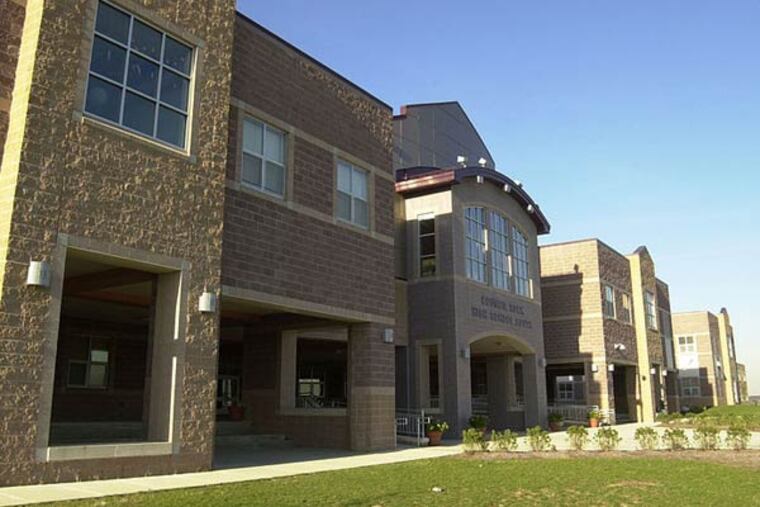Preventing the next mass shooting: Secret Service is training hundreds of teachers, cops at Bucks high school
The training at Council Rock South High School was the first in the region since a report analyzing 41 incidents of targeted school violence nationally between 2008 and 2017. It also comes as the state has seen an increase in fighting in schools, and student feeling depressed or threatened.

More than 200 representatives from schools and police departments across Pennsylvania met with the U.S. Secret Service at a Bucks County school Thursday to learn how to identify signs of a situation all hope they never confront — the next school shooting or other violence.
“This is about early prevention,” said Jeffrey McGarry, a social science research specialist at the Secret Service National Threat Assessment Center. “We want to identify troubled students early, before they even develop an idea.”
The training at Council Rock High School South, closed to the public, was the first in the region since the center released a report in November analyzing 41 incidents of targeted school violence nationwide between 2008 and 2017. It also comes as the state has had an increase in fighting and other violence in schools, as well as students reporting feeling depressed or threatened.
Students “are carrying invisible backpacks to school every day,” including burdens of depression and anxiety, David Volkman, executive deputy secretary of the Pennsylvania Department of Education, told teachers, administrators, and law enforcement attendees during opening remarks at Thursday’s training. He said his department now considers social workers “a must-have in our schools” and is working to increase their ranks across the state’s districts.
The Secret Service report noted “there is no profile of a student attacker,” nor a type of school that has been targeted. It examined the motives of the attackers behind the incidents studied (most common was a grievance with classmates), their interest in violence, and their behavior prior to committing violence.
It followed a 2018 report by the center with instructions for schools on forming threat assessment teams, advising they enlist staff from multiple parts of a school community to create a central reporting process and procedures for evaluating concerning behaviors by students.
Rather than so-called hardening measures — like adding cameras or bulletproof glass — the focus of the service’s guidance is awareness and identification of what might pose a threat to a school community.
“There really wasn’t a description, like, ‘OK, black trench coat, this guy must be somebody who’s going to do something to us,’ ” Robert Whartenby, director of facilities for the Centennial School District in Bucks County, said after Thursday’s training. “It was more on the context of true mental health” and asking why students might feel distressed.
The training did address patterns in the behaviors of past attackers, Whartenby said, including a typically good student whose “grades are starting to slip. The kid who has his head down on the desk.” Other commonalities included use of alcohol or drugs, or troubles with a student’s home life.
While many educators are already familiar with identifying students in need of help, Whartenby said, “we need to come full circle and make sure we embrace that process all the time.”
Pennsylvania has not endured a mass school shooting in the period studied by the center. but the state did log four incidents of targeted school violence involving a knife or blade. The center defined such violence as incidents by a current or recently former K-12 student using a weapon to injure at least one other student or school employee on school property, after targeting one or more students or employees in advance. It did not consider gang or drug-related violence. (A mass shooting at a one-room schoolhouse in Lancaster County left five dead in 2006, before the years the report covered.)
» READ MORE: Study: 2018 worst year for gun incidents in schools
Volkman told the group that incidents of assault, fighting, and violence in the state’s schools had increased “dramatically” between 2015 and 2018, according to the department’s Safe Schools Report.
He also noted a 2017 state survey of students in grades 6-12, which found one of five students reported being threatened at school. It also found 38% of students said they regularly felt sad or depressed, and 10% said they had attempted suicide at least once in the prior year.
The state Attorney General’s Office last year launched an anonymous threat reporting system, Safe2Say Something. The Pennsylvania Commission on Crime and Child Delinquency has also been working to develop a threat assessment training network, in response to a 2019 law that required all school entities to have threat assessment teams.
In Council Rock, which formed a threat assessment team two years ago at the behest of county District Attorney Matt Weintraub, the school district has monthly meetings with school employees and police to discuss potential threats, said Superintendent Robert Fraser.
“We’re able to share information,” Fraser said. He said the team formalized reporting procedures for when a teacher or staff member is concerned about a student’s behavior. The district has also added trauma-informed counseling services through a grant from the state commission, and is seeking grants for social workers at the elementary school level.
Fraser was hopeful that Thursday’s training would “help us refine" what to look for in student behavior that could signal larger problems.
The Secret Service, which began analyzing school violence after the Columbine High School massacre in 1999, has led thousands of similar trainings nationally. Thursday’s was organized by State Rep. Wendi Thomas (R., Bucks), who said she requested it after a New Hope-Solebury school board member showed her one of the Secret Service reports.